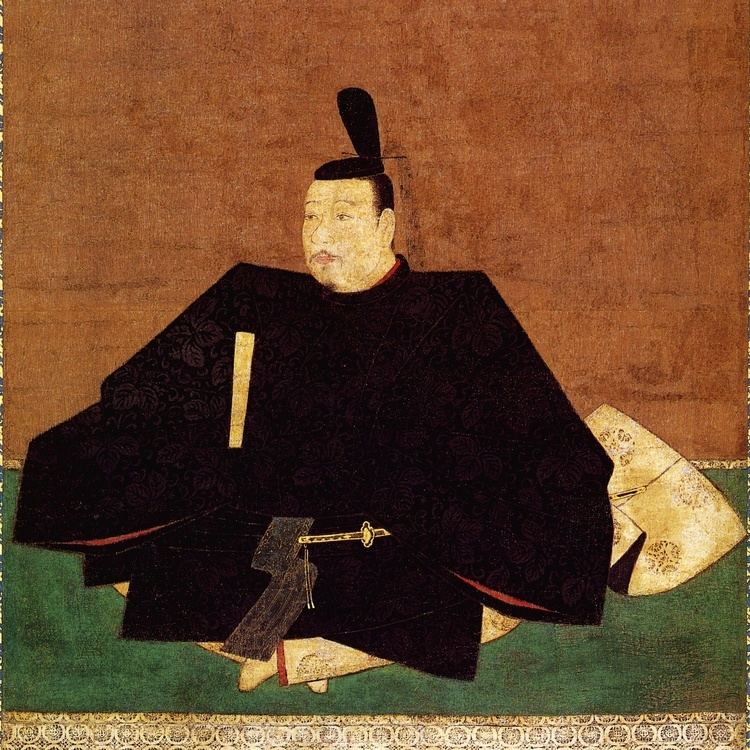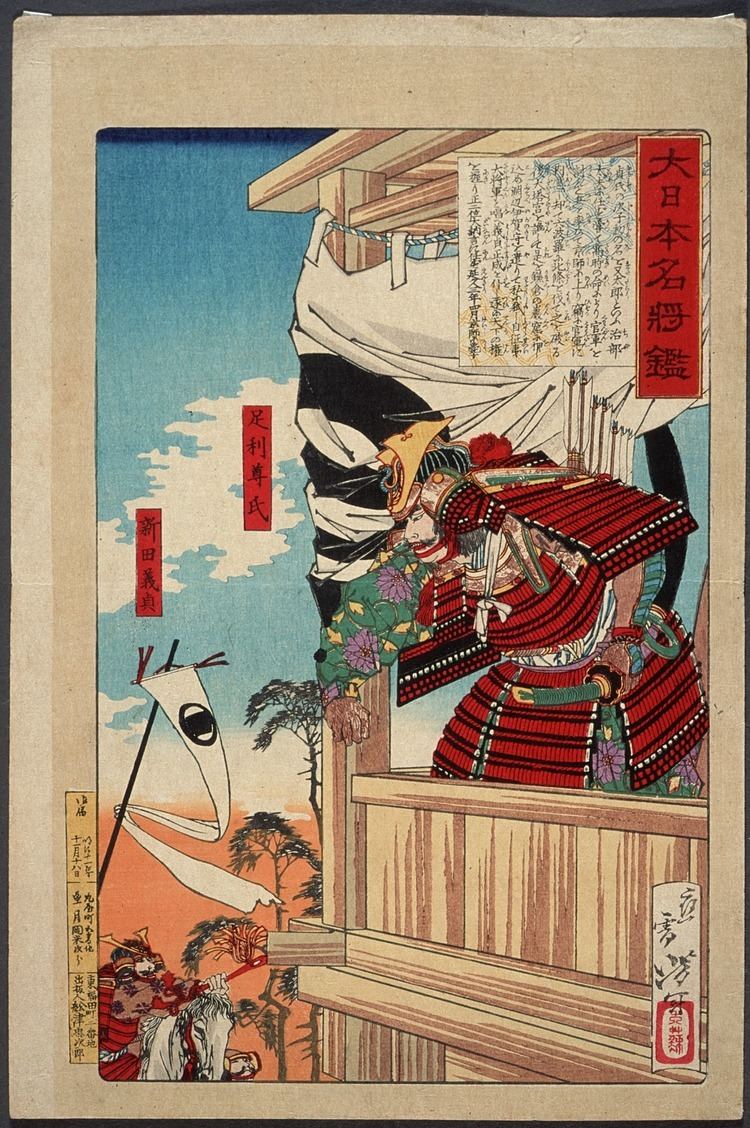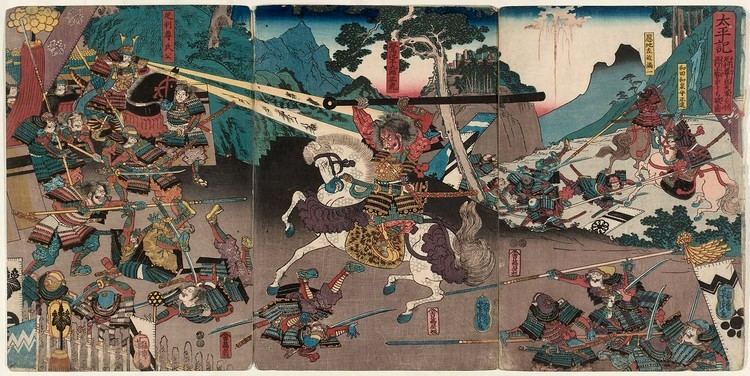Preceded by Kenmu restoration Name Ashikaga Takauji | Siblings Ashikaga Tadayoshi | |
 | ||
Born August 18, 1305Uesugi-sho, Ayabe, Kyoto, orKamakura, Kanagawa,orAshikaga, Tochigi, Japan ( 1305-08-18 ) Children Ashikaga Yoshiakira, Ashikaga Motouji Parents Ashikaga Sadauji, Uesugi Kiyoko Similar People Emperor Go‑Daigo, Ashikaga Tadayoshi, Nitta Yoshisada, Ashikaga Yoshimitsu, Kusunoki Masashige | ||
The donjon of ashikaga takauji samurai ep13 vulture for nethack
Ashikaga Takauji (足利 尊氏, August 18, 1305 – June 7, 1358) was the founder and first shogun of the Ashikaga shogunate. His rule began in 1338, beginning the Muromachi period of Japan, and ended with his death in 1358. He was a descendant of the samurai of the (Minamoto) Seiwa Genji line (meaning they were descendants of Emperor Seiwa) who had settled in the Ashikaga area of Shimotsuke Province, in present-day Tochigi Prefecture.
Contents
- The donjon of ashikaga takauji samurai ep13 vulture for nethack
- Bushi no jidai episode 7 ashikaga takauji
- Life
- Family
- Timeline of Shogunate
- Eras of Takaujis bakufu
- Honours
- Additional Reading
- References

According to Zen master and intellectual Musō Soseki, who enjoyed his favor and collaborated with him, Takauji had three qualities. First, he kept his cool in battle and was not afraid of death. Second, he was merciful and tolerant. Third, he was very generous with those below him.

Bushi no jidai episode 7 ashikaga takauji
Life

His childhood name was Matagoro (又太郎). Takauji was a general of the Kamakura shogunate sent to Kyoto in 1333 to put down the Genkō War which had started in 1331. After becoming increasingly disillusioned with the Kamakura shogunate over time, Takauji joined the banished Emperor Go-Daigo and Kusunoki Masashige, and seized Kyoto. Soon after, Nitta Yoshisada joined their cause, and laid siege to Kamakura. When the city fell to Nitta, the Shogunal regent, Hōjō Takatoki, and his clansmen committed suicide. This ended the Kamakura shogunate, as well as the Hōjō clan's power and influence. Go-Daigo was enthroned once more as emperor, reestablishing the primacy of the Imperial court in Kyoto and starting the so-called Kenmu Restoration.

However, shortly thereafter, the samurai clans became increasingly disillusioned with the reestablished imperial court, which sought to return to the social and political systems of the Heian period. Sensing their discontent, Takauji pleaded with the emperor to do something before rebellion would break out, however his warnings were ignored.

Hōjō Tokiyuki, son of Takatoki, took the opportunity to start the Nakasendai rebellion to try to reestablish the shogunate in Kamakura in 1335. Takauji put down the rebellion and took Kamakura for himself. Taking up the cause of his fellow samurai, he claimed the title of Sei-i Taishōgun and allotted land to his followers without permission from the court. Takauji announced his allegiance to the imperial court, but Emperor Go-Daigo sent Nitta Yoshisada to reclaim Kamakura.

Takauji defeated Yoshisada in the battles of Sanoyama and Mishima. This cleared the path for Takauji and Tadayoshi to march on to Kyoto.
He captured Kyoto for a few days in Feb. 1336, only to be driven out and to Kyūshū by the arrival of forces under Prince Takanaga, Prince Norinaga, Kitabatake Akiie and Yūki Munehiro.
Takauji and his brother were forced to retreat to the west. Takauji then allied himself with the clans native to Kyūshū. After defeating the Kikuchi clan at Hakata Bay in the Battle of Tatarahama (1336), Takauji was "virtually master of Kyushu".
His brother advanced simultaneously by land and both reached the environs of present-day Kobe in July.
At the decisive Battle of Minatogawa in 1336, Takauji defeated Yoshisada again and killed Masashige, allowing him to seize Kyoto for good. Emperor Kōmyō of the illegitimate Northern Court (see below) was installed as emperor by Takauji in opposition to the exiled Southern Court, beginning the turbulent Northern and Southern Court period (Nanboku-chō), which saw two emperors fight each other and which would last for almost 60 more years.
Besides other honors, Emperor Go-Daigo had given Takauji the title of Chinjufu Shogun, or Commander-in-chief of the Defense of the North, and the courtly title of the Fourth Rank, Junior Grade. His buddhist name was Tojiinden Niyama Myogi dai koji Chojuji-dono (等持院殿仁山妙義大居士長寿寺殿).
Family
Timeline of Shogunate
Significant events which shaped the period during which Takauji was shogun are:
Takauji's son Ashikaga Yoshiakira succeeded him as shogun after his death. His grandson Ashikaga Yoshimitsu united the Northern and Southern courts in 1392.
Eras of Takauji's bakufu
Because of the anomalous situation, which he had himself created and which saw two Emperors reign simultaneously, one in Yoshino and one in Kyoto, the years in which Takauji was shogun as reckoned by the Gregorian calendar are identified in Japanese historical records by two different series of Japanese era names (nengō), that following the datation used by the legitimate Southern Court and that formulated by the pretender Northern Court.
